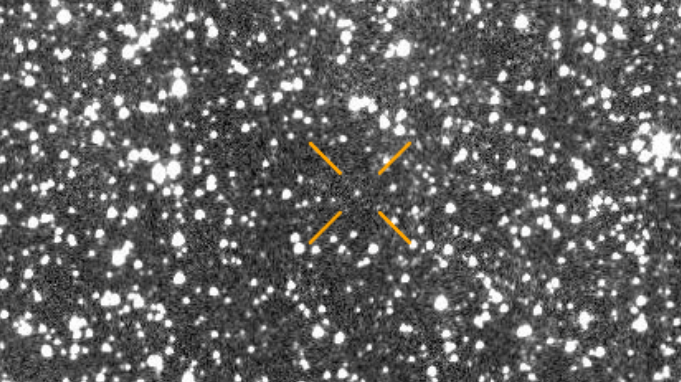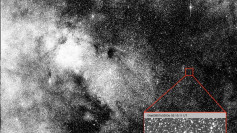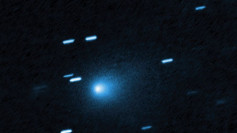New footage of interstellar comet 3I/ATLAS has renewed scientific and public attention, as astronomers captured the object for the first time since it vanished behind the Sun in late October. The video, recorded on November 9 by Joan Miguel Gonzalez Navarra of the Sabadell Institute in Spain, shows the comet drifting against a star field under an 83% illuminated Moon. Navarra assembled the recording from 20 one-minute exposures over a 20-minute observing window. He noted that the comet appeared "as if it was falling apart," raising questions about whether the object is now fragmenting following its close approach to the Sun.
The footage marks the first confirmed visual reacquisition of 3I/ATLAS since it disappeared from Earth-based view during its passage behind the Sun. Scientists had warned that the intense radiation and gravitational forces near perihelion could accelerate outgassing or cause structural breakup, a phenomenon observed in many comets that originate outside the inner Solar System.
Earlier imagery also came from China's Tianwen-1 spacecraft, currently orbiting Mars. According to the China National Space Administration, Tianwen-1 captured photos of 3I/ATLAS from a distance of about 30 million kilometers. The images, compiled into a GIF, show the comet's gaseous coma and trailing dust tail as it moved past Mars' orbital region.
The CNSA imagery reinforced prevailing scientific consensus that 3I/ATLAS is a natural interstellar comet composed largely of volatile ices that heat rapidly when near the Sun. The close-up data has also raised expectations for China's Tianwen-2 mission, scheduled to encounter both a near-Earth asteroid and a comet later this decade, potentially enabling even more direct sampling of interstellar material.
Despite the new observations, 3I/ATLAS remains a focal point for online speculation, where some commentators continue to suggest it may be artificial in origin. Among the most circulated claims online are interpretations of the comet's shifting brightness and observed color variations, which some have used to argue for non-natural explanations.
Astronomer Qicheng Zhang of the Lowell Observatory rejected those theories in remarks to Space.com on November 7, addressing suggestions that the comet's changing color and rapid brightening are anomalous. "We don't have any evidence for the gas coma changing colours," Zhang said. "Our result just showed that the gas coma is likely still around and contributing substantially to the overall brightness."
Speaking with Popular Science, Zhang also criticized claims promoted by astrophysicist Avi Loeb, who has suggested the possibility of "alien tech" signatures in interstellar visitors. "I think my main source of annoyance, though, is just that so much has been propagated by someone with a background in science who should know better," Zhang said. "A large fraction of misinformation I've seen floating around can be directly traced back to him misinterpreting, not fully reading the papers or data he comments on."
Zhang emphasized that the brightening of 3I/ATLAS began in early September and is consistent with outgassing behavior seen in many comets as they approach the Sun. He added that public curiosity could be redirected toward understanding cometary physics rather than searching for evidence of extraterrestrial design.




